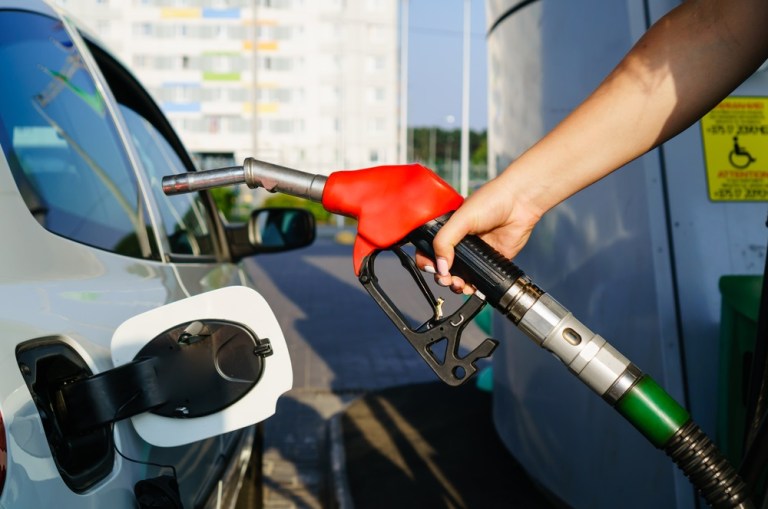
Consumers use mobile apps throughout their drives – for directions, music or the latest traffic updates – but they can also be an opportunity for gas stations. Almost half – 43 percent of high-income millennials – said they would be more likely to visit a gas station if its app offered them convenience, loyalty and savings, according to the PYMNTS Paying At The Pump report.
Those ideal consumers tend to be in their early 40s, earn higher incomes and are more likely to be educated. In fact, 37 percent of the sample held a college degree and earned an average of roughly $65,000 per year. How are gas apps from both gas stations and comparison services tapping into this demographic, along with the overall market? Find out through this roundup of top gas station apps:
Almost four in 10 consumers – or 38.7 percent – use GasBuddy’s mobile app for gas. In a June interview with PYMNTS, GasBuddy CEO Sarah McCrary explained that customers rarely shop by brand. Instead, they look for a combination of the best price and the best location. She said that’s why GasBuddy lets users collect and redeem points across brands, rather than constraining them to shopping at the same place again and again. It may seem like nickel-and-diming when a customer drives another mile down the street to save five cents on the gallon, but McCrary said that price sensitivity is so significant in the fuel category that it can influence customers to vary their routines and switch from their “usual” brand.
Nearly one in 10 consumers – or 8.9 percent – use Google Maps’ mobile app for gas. In fact, Google just inked a deal with the Renault-Nissan-Mitsubishi Alliance to power in-car media displays. The alliance plans to bring the new system to market in 2021 in a bid to introduce a better integration of Google Maps, along with the company’s app store and voice assistant – all via the dashboard. Fortune called the tie-up “a victory for Google.” The outlet also said the deal makes the app “one step closer to being the standard mapping software.” Already, consumers like to use Google’s software instead of technology developed by car companies and their suppliers, according to The Wall Street Journal.
Just under 7 percent of consumers use Shell Fuel Rewards’ mobile app for gas. The news comes as Shell, General Motors and mobile payments provider P97 announced a service in August that enables drivers to find and pay for fuel via technology embedded in their vehicles’ dashboards. The technology makes use of the GM Marketplace platform, which also lets consumers order food and coffee, and make dinner reservations with participating firms, among other tasks. A driver running low on fuel could find one of 11,000 Shell stations in North America with the Marketplace platform and start the payment process upon pulling up to a pump. The in-dash system preauthorizes the payment and sends the driver a three-digit code, which the driver then enters into the pump’s keypad — the first time the driver must leave the vehicle. Following that, the pump is ready to go within seven seconds.
And 5.2 percent of consumers use Waze’s mobile app for gas. The core value proposition for Waze is just-in-time intelligence that can help drivers make decisions en route. That can be especially useful to drivers on holidays like Memorial Day weekend: Drivers can already alert each other about accidents, roadwork and the best gas prices around, but that becomes even more valuable with 36.6 people on the road, traveling through unfamiliar territory. For instance, drivers may not know the best detour for avoiding a traffic jam, and Waze can help them find it. And with a long drive ahead or behind, consumers will be looking to save on gas, which had spiked in price leading into this year’s Memorial Day weekend. An average price of $2.87 per gallon is $0.53 higher than it was the year before.
Additionally, 4.9 percent of consumers use Speedway’s mobile app for gas. The Speedway mobile app updates prices at 30-minute intervals, seven days per week. Its gas price search and store locator features do not require users to have a membership in its Speedy Rewards program. “Speedy Rewards members will, however, be able to view their account balances, access a digital version of their Speedy Rewards Card, manage their profile and enter sweepstakes from within the app after logging in,” according to the website for the mobile app, which is available from both the Google Play and iTunes stores.
How can gas mobile apps see greater adoption going forward? Offering cost savings to consumers could be a winning formula, as 57.5 percent of surveyed consumers cited price discounts as a top priority. Will more gas apps offer discounts? Time will tell.